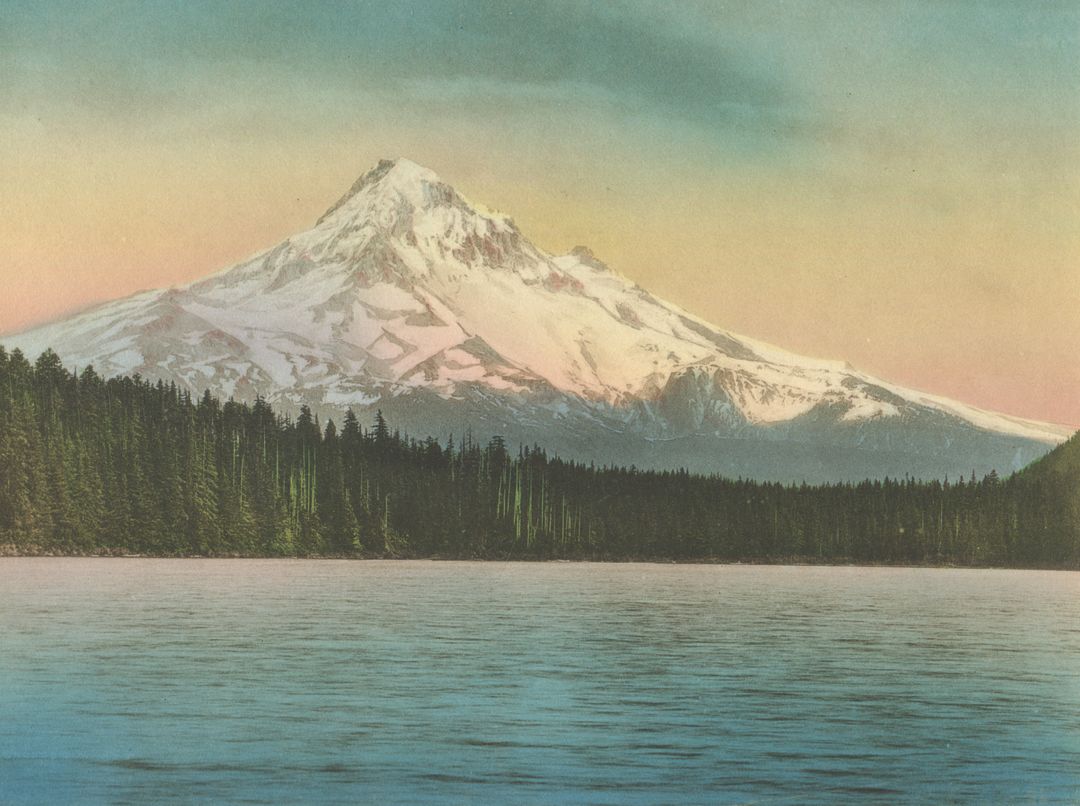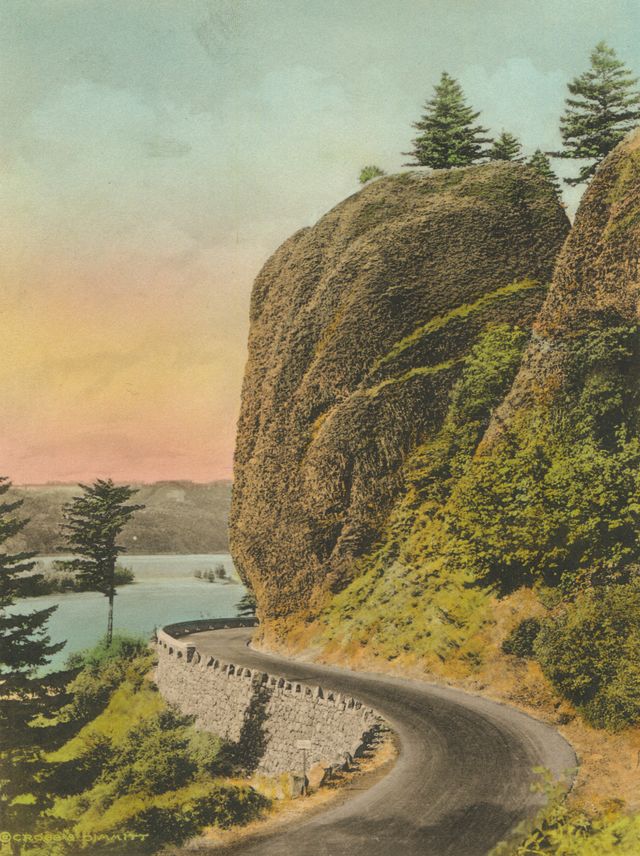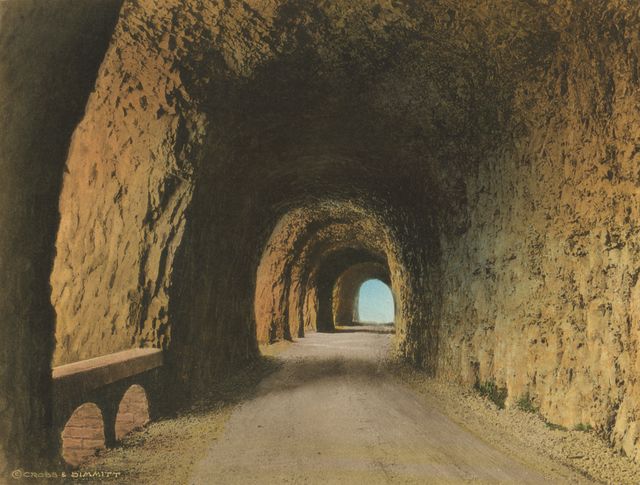The Columbia River Highway Turns 100

Image: Cross & Dimmitt
They called it the “Wonder Road of America.”
In June 1916, a crowd of thousands gathered at Multnomah Falls and then continued to Crown Point for the dedication of the Columbia River Highway. The new road, state of the art both technically and as a design gesture infused with optimism and romance, replaced the ferry that chugged up and down the river between The Dalles and Portland. After Rose Festival Queen Muriel Saling baptized the highway with water from Multnomah Falls, President Woodrow Wilson pressed a button in DC that triggered a flag to unfurl over Crown Point. The crowd belted out “The Star-Spangled Banner,” and cannons of the Oregon National Guard boomed. The Oregonian exclaimed, “The whole world knows that the Columbia River Highway is open. If it doesn’t, it ought to.”

Image: Cross & Dimmitt
It was a moment born of Portlanders’ avid adoption of a hot new technology: the automobile. In 1915, Multnomah County saw 22 percent more new cars on the roads than the year before, with some national dealers like Ford, Studebaker, and Reo Motor Cars claiming to sell more cars per capita in Oregon and Washington than in the rest of the nation. This highway would help channel that newfound obsession, and open the state’s natural beauties to weekend hikers and picnickers. Boosters boasted that the road would make Oregon “the playground of America.”
The highway also set a standard in road design. It was a 24-foot-wide affair, replacing the previous twisting and rutted road. A hard surface, unique in that era, would be paved along the entire highway. Engineer Samuel C. Lancaster infused the road with European flourishes, like Italian-style crafted walls. The design intended that the Columbia River remain in view whenever possible, resulting in five massive windows cut into the tunnel of Mitchell Point—making that portion, at the time, the most expensive stretch of road in the world, with a price tag of $48,160, or about $1.1 million today.

Image: Cross & Dimmitt
But as car culture evolved (or metastasized), “Portland’s Pride” was unable to support the increase in traffic, and scenic curves lost favor to utilitarian straight lines. By 1961, the Oregon State Highway Department adopted the slogan “Freeways are Easier,” and the romanticism of a motor trip up the Gorge disappeared. Interstate 84 expanded to four lanes; the tunnel at Mitchell Point, dynamited. Today, cars sail past The Dalles at 70 miles per hour, and the historic highway’s artisanal features prove difficult to maintain. The highway often feels more like a sunny weekend lane for Portlanders in love with another transportation technology: 223,000 bicycles ride the road each year.
Historian Doug Kenck-Krispin joins an Oregon Historical Society Archivist to discuss the CRH at McMenamins Edgefield on June 28.




